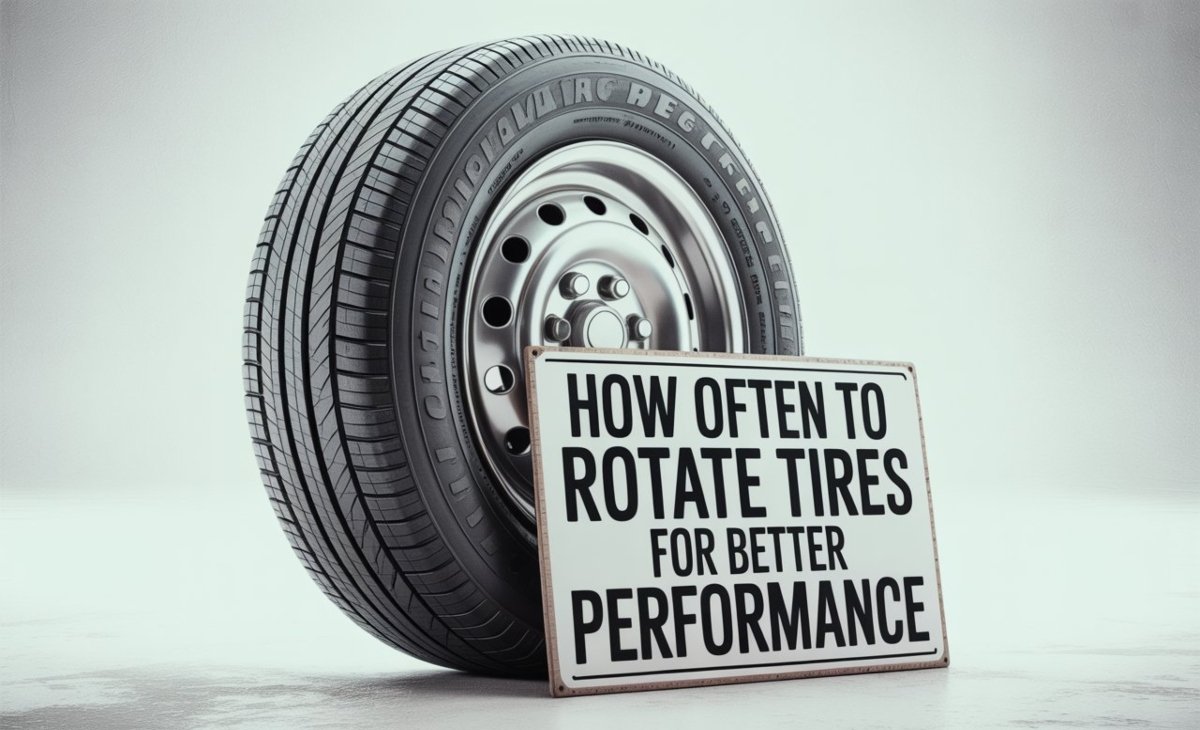If you’ve ever wondered how often to rotate tires, you’re not alone. Many drivers skip this simple maintenance step, only to face uneven tire wear, poor handling, or costly replacements. The truth is, regular tire rotation isn’t just a suggestion—it’s essential for safety and saving money. In this guide, we’ll break down everything you need to know, from recommended intervals to the benefits and common mistakes people make.
What Is Tire Rotation?
Tire rotation is the process of moving your tires from one position on the vehicle to another. For example, the front tires might be moved to the back, or the left side may switch to the right. The goal is to ensure even tread wear across all four tires.
Most cars carry more weight in the front, which means front tires wear down faster. By rotating them, you balance the wear pattern, giving your tires a longer life and maintaining consistent performance.
How Often to Rotate Tires
The general rule of thumb is to rotate your tires every 5,000 to 7,500 miles. However, this can vary depending on your vehicle type, driving habits, and tire brand.
- Standard cars and SUVs: 5,000–7,500 miles is recommended.
- High-performance vehicles: May need rotations as frequently as every 3,000 miles.
- All-wheel drive (AWD): Should be rotated more often since all tires work equally hard.
Always check your owner’s manual because manufacturers provide specific guidelines tailored to your vehicle.
Why Tire Rotation Matters
Tire rotation is more than just maintenance—it’s protection for your car and wallet. Here’s why:
Extends Tire Life
Uneven wear shortens a tire’s lifespan. Rotating them regularly spreads the workload, helping you avoid early replacements.
Improves Safety
Worn-out or uneven tires can reduce traction, especially in rain or snow. Rotation ensures balanced grip, lowering your risk of accidents.
Saves Money
Replacing a full set of tires can cost hundreds of dollars. Routine rotations are inexpensive and can delay that big expense.
Better Fuel Efficiency
Uneven tires create extra rolling resistance, which makes your engine work harder. Proper rotation helps your car run more efficiently.
What to Expect During Tire Rotation
If you take your car to a mechanic, a tire rotation is usually quick and affordable. Here’s what typically happens:
- The mechanic lifts your car and removes all four tires.
- Tires are repositioned based on the correct rotation pattern for your vehicle (front-to-back, cross-pattern, or side-to-side).
- Lug nuts are tightened to the manufacturer’s torque specifications.
- Tires are inspected for tread depth, damage, or alignment issues.
The process usually takes about 30–45 minutes. Some shops even include it free with an oil change.
Tips for Tire Care Beyond Rotation
Rotating your tires is crucial, but it’s just one piece of tire maintenance. To get the most out of your investment, follow these tips:
- Check tire pressure monthly. Underinflated tires wear faster and waste fuel.
- Inspect tread depth. Use the penny test—if Lincoln’s head is visible, it’s time for new tires.
- Schedule alignments. Poor alignment causes uneven wear, even with regular rotations.
- Balance your tires. If you feel vibrations at high speeds, tire balancing may be needed.
These small habits can add years to your tire life and improve your car’s performance.
Cost of Tire Rotation
Tire rotation is one of the most affordable maintenance services you can get. On average, it costs between $25 and $60 at most shops. Many dealerships and tire retailers also include free rotations when you purchase a new set of tires.
Compared to the cost of replacing a full set of tires—anywhere from $400 to $1,000—rotations are a smart investment.
Final Words
So, how often to rotate tires? The sweet spot for most drivers is every 5,000 to 7,500 miles. Following this schedule keeps your tires wearing evenly, saves you money, and improves safety. Combine tire rotations with good habits like checking pressure and scheduling alignments, and you’ll enjoy a smoother, safer ride for years.
If you’re unsure of your last rotation, don’t wait. Schedule one today and give your tires the care they deserve.
Common Questions About Tire Rotation
Do I really need to rotate my tires?
Yes. Skipping rotations leads to uneven wear, which can cause vibrations, poor handling, and early tire replacement.
Can I rotate my tires at home?
If you have the right tools—jack stands, lug wrench, and torque wrench—you can rotate them yourself. However, most people prefer professional service for safety.
What happens if I never rotate my tires?
Without rotation, your tires may wear unevenly, reducing their lifespan by thousands of miles. It can also affect fuel economy and overall driving safety.
Is tire rotation the same as alignment?
No. Rotation changes tire positions, while alignment adjusts suspension angles. Both are important, but they serve different purposes.





